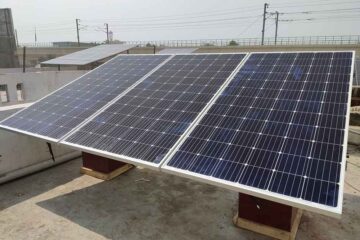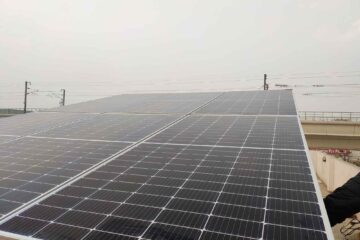Temperature Coefficient of Power
The temperature coefficient of Power is mentioned on the module datasheet. This is a very important parameter one should consider while selecting a PV module between different manufacturers.
As we know temperature has a negative impact on the performance of the PV modules, i.e. as cell temperature increases, the power of a module decreases. This decrease is indicated as the Temperature coefficient of Power on the module datasheets. Few examples as taken from various module datasheets are shown in the figures below:

It can be seen from the above Figures that sample Module 1 has a Temperature coefficient of Power equal to 0.36% / °C while sample Module 2 has 0.35% / °C. This means that at higher temperatures, Module 1 will have more power losses when compared to Module 2.
Hence, a Module with a lower Temperature coefficient of Power should be selected if the project is designed for higher temperature regions.
NOCT value of the PV Module
Every manufacturer provides NOCT (Nominal Operating Cell Temperature) values of the solar PV module on the technical datasheet. NOCT values define the expected cell temperature at different ambient temperatures.

Module 1 has a NOCT value of 47 °C and Module 2 has a NOCT value of 44 °C.
Let’s use these values to estimate the maximum cell temperature for both the modules, considering the maximum ambient temperature of 45 °C.
Highest expected cell temperature can be calculated by using below mentioned modified formula:
Maximum Cell Temperature = Maximum Ambient Temperature + NOCT – 20
For Module 1: Maximum Cell Temperature = 45 + 47 – 20 = 72 Deg Celsius
For Module 2: Maximum Cell Temperature = 45 + 44 – 20 = 69 Deg Celsius
In the above calculations, it can be seen that at the same ambient temperature, the cell temperature of Module 2 is lower than the cell temperature of Module 1. Hence, there will be more power losses in Module 1 than Module 2, as we know that the higher the cell temperature higher will be the power loss.
Hence, a module with the lowest NOCT is always preferable.
Power tolerance of the module
In the market two power tolerance type of modules are available, positive tolerance and negative tolerance. Negative power tolerance means the power rating of the module can be less than the peak rating mentioned in the datasheet. For example, a 350 Wp (±5% tolerance) means the module rating can be anywhere between 332.5 Wp to 367.5 Wp. So, there is always an ambiguity, whether one will get a higher rating module or a lower rating module. On the other hand, a 350 Wp (0,+5% tolerance) means the module rating can be anywhere between 350 Wp and 367.5 Wp. Hence, in the case of positive tolerance modules, there is no ambiguity that one will get a lower power rating module.
Hence, Positive power tolerance module should be preferred over negative power tolerance module


0 Comments